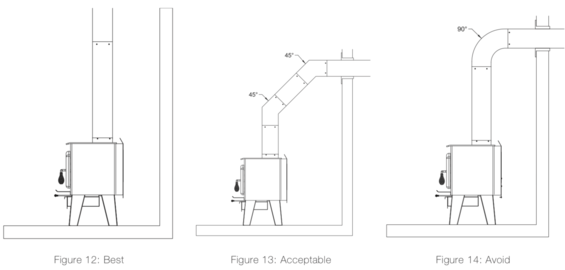Hello All,
I am new to the woodstove world. I purchased a home that previously had a small jotul. I replaced the jotul with a Lopi Liberty as the jotul had mortar falling out and I wanted something that could hold larger splits and had a longer burn time. The unit was installed by a professional. Since the install I have been having issues with smoke rolling back into the house, whether it be on start up or refueling. Also, a couple times, smoke escaping through flue joints in the house. I since have had an extension put on the flue (double wall) and an air kit put in. I am still having a little bit of smoke come in the house when refueling, though not as much and not as often as it had been previously, and nothing leaking through the joints,
My concern now is that at the end of a burn, I still notice a slight smell of smoke and often my eyes feel a little irritated. I am the only one in the house that seems to notice it though. I only smell it at the end of a burn when there are no longer flames. While the fire is going, I do not have this issue. I do need to extend the flue once again as the unit needs a minimum of 15 feet of flue and I only have about 13 feet. Also, I do have negative air pressure in the home as I have radon reduction system in the basement that has 6 suction points ( I know, that's a lot! I have the worst soil to move air through).
My question I guess is, will extending the flue pipe be enough to combat the negative air pressure? Or is the slight smell something I just have to deal with? Also, I do know that the wood plays a factor in this. I use a mixture of store bought kiln dried wood and unfortunately semi-seasoned wood as that seems to be what is plentiful out here. I've also attached pictures of the connection points of the flue in the home as I was concerned about those as well. The company I went through for the install says that they are fine as they interlock. I've since wrapped them with flue tape as I was not sold, at first it seemed to help, but still have the same issue. Sorry this was rambling. I am trying to provide as much as I can that may be relevant. Thank you for any and all responses.
View attachment 324936View attachment 324937View attachment 324938View attachment 324939
I am new to the woodstove world. I purchased a home that previously had a small jotul. I replaced the jotul with a Lopi Liberty as the jotul had mortar falling out and I wanted something that could hold larger splits and had a longer burn time. The unit was installed by a professional. Since the install I have been having issues with smoke rolling back into the house, whether it be on start up or refueling. Also, a couple times, smoke escaping through flue joints in the house. I since have had an extension put on the flue (double wall) and an air kit put in. I am still having a little bit of smoke come in the house when refueling, though not as much and not as often as it had been previously, and nothing leaking through the joints,
My concern now is that at the end of a burn, I still notice a slight smell of smoke and often my eyes feel a little irritated. I am the only one in the house that seems to notice it though. I only smell it at the end of a burn when there are no longer flames. While the fire is going, I do not have this issue. I do need to extend the flue once again as the unit needs a minimum of 15 feet of flue and I only have about 13 feet. Also, I do have negative air pressure in the home as I have radon reduction system in the basement that has 6 suction points ( I know, that's a lot! I have the worst soil to move air through).
My question I guess is, will extending the flue pipe be enough to combat the negative air pressure? Or is the slight smell something I just have to deal with? Also, I do know that the wood plays a factor in this. I use a mixture of store bought kiln dried wood and unfortunately semi-seasoned wood as that seems to be what is plentiful out here. I've also attached pictures of the connection points of the flue in the home as I was concerned about those as well. The company I went through for the install says that they are fine as they interlock. I've since wrapped them with flue tape as I was not sold, at first it seemed to help, but still have the same issue. Sorry this was rambling. I am trying to provide as much as I can that may be relevant. Thank you for any and all responses.
View attachment 324936View attachment 324937View attachment 324938View attachment 324939


